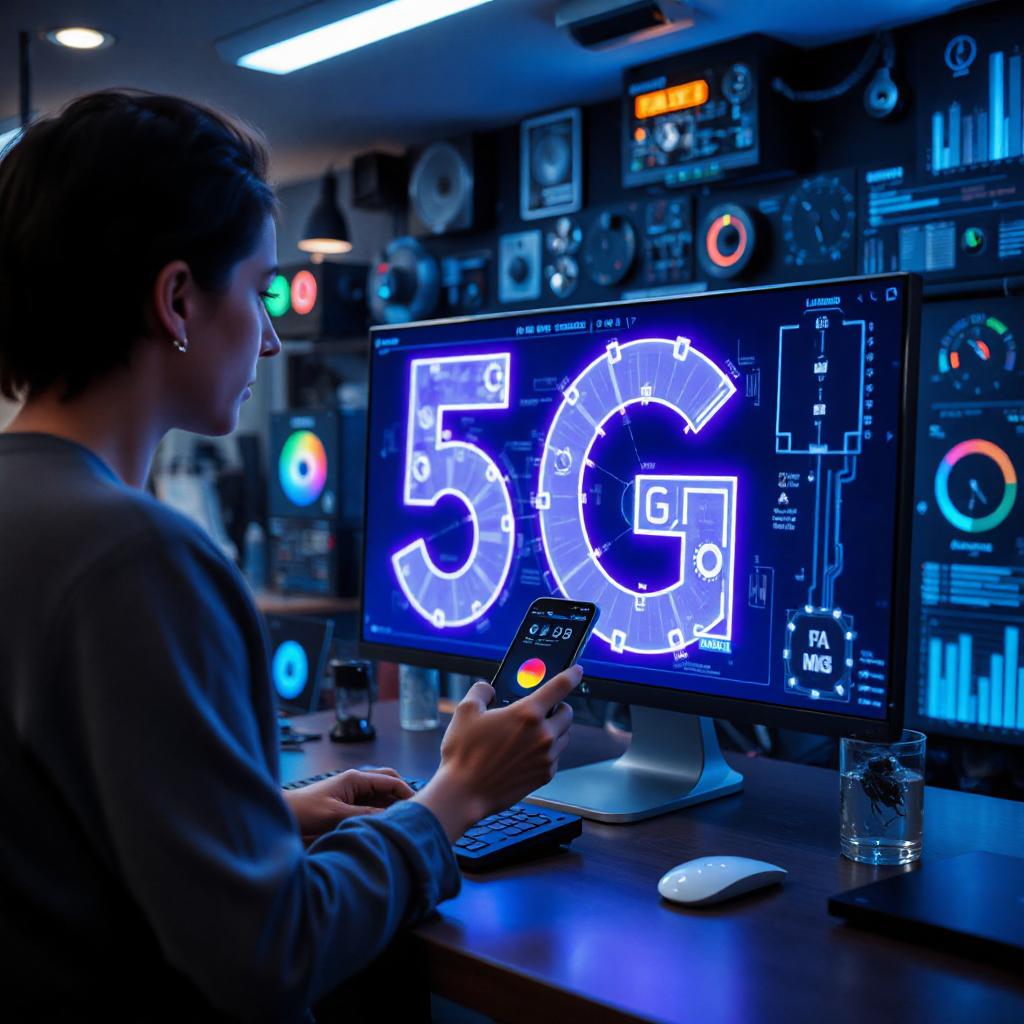The Impact of 5G on Programmatic Advertising
The rollout of 5G technology is more than just a technological upgrade; it’s a game-changer for the digital advertising ecosystem. With faster speeds, lower latency, and greater connectivity, 5G is set to redefine how brands engage with audiences through programmatic advertising. This blog explores the transformative impact of 5G on programmatic advertising, the opportunities it presents, and how advertisers can leverage its potential.
What Is 5G?
5G, the fifth generation of wireless technology, offers significant advancements over its predecessors:
- Speed: Up to 100 times faster than 4G, enabling seamless streaming and rapid content delivery.
- Low Latency: Near-instant response times, critical for interactive and real-time experiences.
- Massive Connectivity: The ability to support billions of devices simultaneously, fostering the growth of IoT (Internet of Things).
These capabilities create an environment ripe for innovation in digital advertising.
Key Impacts of 5G on Programmatic Advertising
1. Enhanced User Experience
The ultra-fast speeds and low latency of 5G improve the quality of digital experiences. For programmatic advertising, this means:
- High-Quality Creative Content: Rich media ads, including 4K video and augmented reality (AR), can be delivered without buffering.
- Real-Time Interactivity: Interactive ad formats like playable ads and live polls become more engaging and effective.
- Improved Mobile Experience: Mobile-first campaigns can leverage 5G to deliver seamless, high-quality content on the go.
2. Growth of Video and CTV Advertising
Video content continues to dominate digital advertising, and 5G accelerates this trend by:
- Facilitating High-Resolution Streaming: Advertisers can deliver 4K and 8K video ads without performance issues.
- Boosting Connected TV (CTV) Adoption: With better connectivity, more households will adopt CTV, increasing programmatic opportunities in this space.
3. Expansion of IoT and Smart Devices
The proliferation of IoT devices, powered by 5G, opens new avenues for programmatic advertising:
- Personalized Experiences: Advertisers can target users based on data from smart devices like wearables, home assistants, and connected cars.
- Context-Aware Advertising: IoT data enables hyper-local and contextually relevant ad placements.
4. Advanced Data Collection and Targeting
5G enhances data collection capabilities, allowing for:
- Real-Time Insights: Faster networks enable real-time analysis of consumer behavior.
- Precision Targeting: With more data points from IoT and mobile devices, programmatic platforms can deliver highly personalized ads.
5. Transformation of Retail Media Networks
5G can revolutionize in-store advertising by:
- Enabling AR and VR Experiences: Shoppers can interact with virtual product displays and personalized promotions.
- Seamless Integration of Online and Offline: Real-time data sync between physical stores and online platforms enhances omnichannel strategies.
Challenges and Considerations
While 5G offers immense potential, it also presents challenges:
1. Privacy Concerns
The increased connectivity and data collection raise privacy issues. Advertisers must:
- Adhere to strict data privacy regulations.
- Be transparent about data usage and storage.
2. Infrastructure Costs
Deploying 5G infrastructure is expensive, and advertisers may face higher costs for:
- Creating high-quality, data-intensive content.
- Accessing advanced programmatic platforms optimized for 5G.
3. Fragmented Adoption
The global rollout of 5G is uneven, leading to:
- Variability in audience reach and campaign effectiveness.
- The need for adaptable strategies across regions.
Strategies for Advertisers
To harness the power of 5G in programmatic advertising, advertisers should:
1. Embrace Rich Media
Invest in creating:
- High-resolution video ads and interactive formats.
- AR and VR experiences to captivate audiences.
2. Leverage IoT Data
Develop partnerships with IoT device manufacturers to:
- Access valuable consumer insights.
- Deliver contextually relevant ads.
3. Optimize for Mobile
With 5G’s mobile capabilities, prioritize:
- Mobile-first designs for ads and landing pages.
- Campaigns that cater to on-the-go audiences.
4. Focus on Real-Time Advertising
Capitalize on 5G’s low latency by:
- Running dynamic ad campaigns that respond to real-time events.
- Incorporating live data feeds into programmatic strategies.
Conclusion
5G is poised to revolutionize programmatic advertising, offering unprecedented opportunities for innovation and engagement. By embracing the capabilities of 5G, advertisers can deliver richer, more personalized experiences and stay ahead in an increasingly competitive landscape. However, success will require navigating challenges like privacy concerns and uneven adoption while staying committed to creating value-driven, user-centric campaigns.
How do you see 5G shaping the future of programmatic advertising? Share your thoughts in the comments below!

Comments are closed